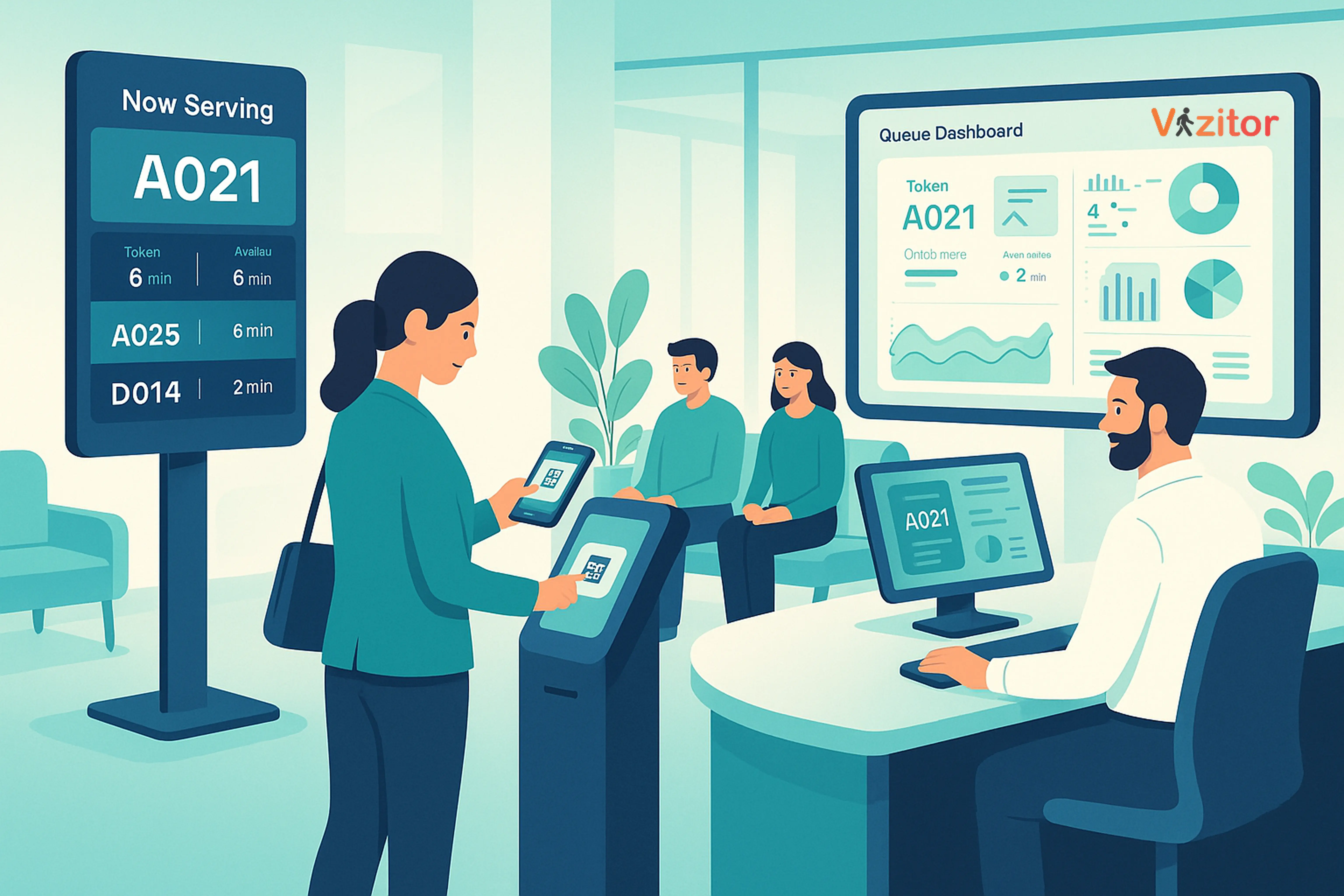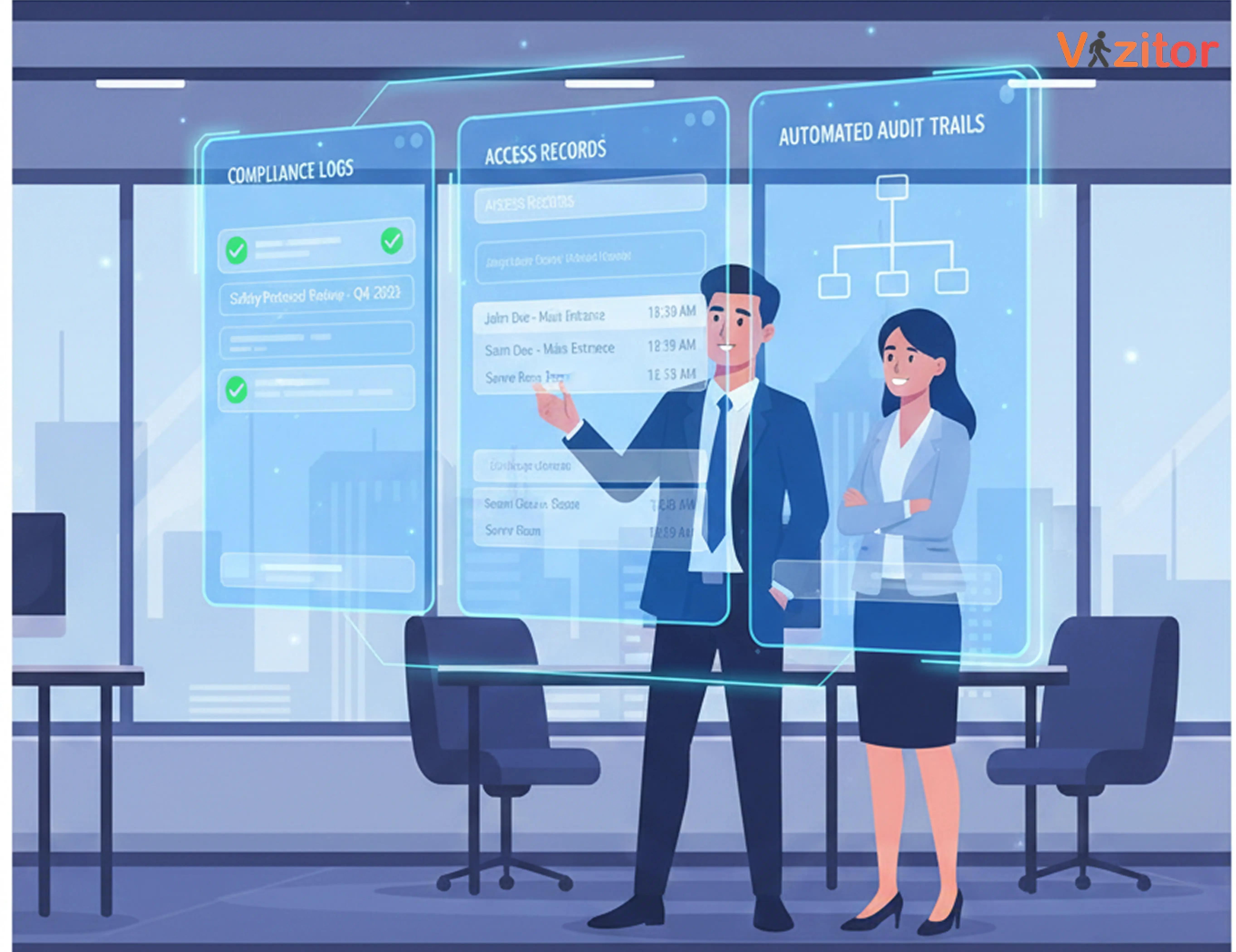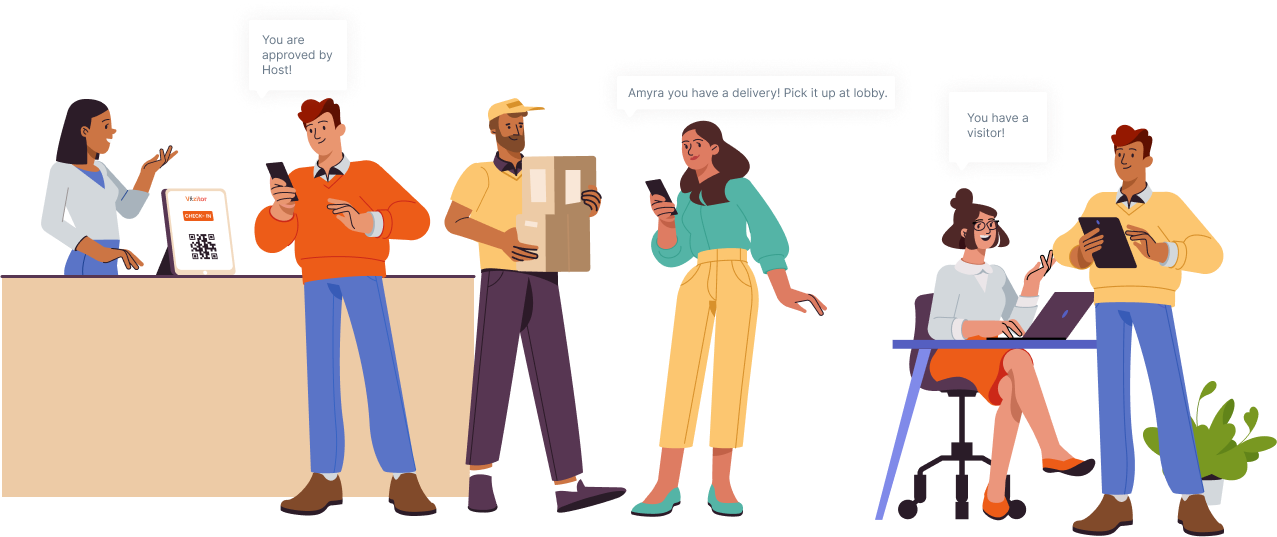7 Common Meeting Room challenges and How to Solve Them
Managing conference/Meeting rooms isn’t as easy as it sounds. From double bookings and no-shows to underutilized spaces and tech failures, poor conference room management silently drains productivity and office resources. In this blog, we uncover the 7 most common meeting room challenges that frustrate employees and waste time and share practical solutions (including smart booking systems like Vizitor) to optimize space utilization, streamline scheduling, and boost workplace collaboration.
Table of Content
Try Vizitor for Free!

Published on: Sat, Jan 18, 2025
Last updated: Update
Read in 7 minutes
Introduction
Meeting rooms are the heartbeat of collaboration in any workplace. From client presentations to internal brainstorming sessions, they play a critical role in driving productivity. Yet, many organizations struggle with conference/meeting room management, facing challenges like double bookings, last-minute cancellations, or underutilized spaces.
Studies show that employees waste an average of 30 minutes per meeting due to poor scheduling and technical issues. Multiply that across teams, and the impact on productivity and even employee satisfaction is significant.
This blog explores the 7 most common meeting room management challenges and provides practical solutions to overcome them. Whether you manage a growing startup or a large enterprise, optimizing your meeting spaces can save time, improve collaboration, and maximize the return on your workplace resources.
Why Effective Meeting Room Management Matters
Meeting rooms are more than just spaces, they are collaboration hubs. When managed efficiently, they:
- Improve productivity by reducing wasted time
- Enhance teamwork and communication
- Optimize office space utilization
- Create a professional impression for clients and visitors
On the other hand, poor meeting room management can lead to missed opportunities, employee frustration, and unnecessary costs.
What are common challenges of Meeting Room Management at Offices?
Great Meeting room management is crucial for maintaining productivity and fostering collaboration in the workplace.
However, many organizations face common yet significant challenges that disrupt workflows, waste resources, and create frustration among employees.
Challenge 1: Double Bookings & Scheduling Conflicts
Few things are more frustrating than two teams showing up to the same meeting room at the same time.
Example: A marketing team books a brainstorming session, only to find the room already taken by the sales team. The result? Confusion, delays, and wasted time.
Solution:
- Use a centralized room booking system with real-time updates
- Integrate with Google Calendar, Outlook, or Microsoft Teams
- Enable instant notifications when bookings change
Challenge 2: Underutilized Meeting Rooms
Studies show that 30-50% of meeting rooms remain underused, while larger rooms are often booked by small groups.
Example: A 20-seat boardroom frequently occupied by 2-3 employees, while smaller huddle rooms sit idle.
Solution:
- Use analytics-based booking software to track room usage
- Redesign office layouts to match actual usage patterns
- Add more small meeting spaces or flexible collaboration areas
Challenge 3: Struggling to Find a Free Room
Employees waste valuable time searching for available spaces, sometimes ending up in hallways or cafeterias.
Example: A team spends 15 minutes walking between rooms, only to discover none are available.
Solution:
- Install digital room displays outside meeting spaces
- Use mobile apps to view real-time availability
- Enable instant booking via kiosks or employee devices
Challenge 4: No-Show or “Ghost” Bookings
Studies show that 20% of meeting room bookings are no-shows. Rooms remain blocked on calendars but unused in reality.
Example: A team cancels a meeting last minute but forgets to update the booking, leaving the room empty for an hour.
Solution:
- Add automated check-in systems via QR code or kiosk
- Auto-release rooms if no one checks in within 10-15 minutes
- Send reminders before meeting start time
Challenge 5: Technology Failures During Meetings
Broken projectors, Wi-Fi issues, or missing cables can derail important discussions.
Example: A client presentation gets delayed because the AV system isn’t working.
Solution:
- Perform regular equipment checks
- Let employees report issues directly via the booking system
- Keep backup essentials (markers, adapters, cables) in every room
Challenge 6: Lack of Clear Usage Policies
Without defined rules, employees misuse meeting spaces whether for personal calls or leaving them messy.
Example: A room booked for a “meeting” is actually used for a private phone call.
Solution:
- Set and communicate clear policies for booking and usage
- Display guidelines inside each conference room
- Automate rules in the booking system (e.g., time limits, cancellations)
Challenge 7: Limited Integration with Other Tools
Standalone room booking systems create friction if they don’t sync with calendars or collaboration tools.
Solution:
- Use an integrated meeting room management system
- Sync with Google Workspace, Microsoft Teams, and Slack
- Ensure seamless communication across platforms
Impact of Poor Conference Room Management
If ignored, these challenges can harm your workplace:
- Wasted Time: Employees lose 30 minutes per week searching for rooms.
- Financial Losses: Underutilized real estate costs companies thousands annually.
- Low Morale: Constant conflicts frustrate employees.
- Missed Opportunities: Delayed client meetings or pitches hurt business growth.
Steps to Better Conference Room Management
Improving meeting room efficiency doesn’t require a massive overhaul just the right practices and tools. Here are key steps to get started:
- Adopt a Centralized Booking System
Eliminate double bookings and confusion with a digital conference room booking system that shows real-time availability. - Set Clear Usage Policies
Define rules for booking, cancellations, and no-shows. Communicate them across the organization to build accountability. - Use Data to Optimize Space
Track how often rooms are booked, how many seats go unused, and adjust layouts or scheduling rules accordingly. - Integrate with Calendars & Collaboration Tools
Sync meeting room reservations with Outlook, Google Calendar, or Slack to simplify scheduling and reduce errors. - Leverage Technology for Check-Ins
Use touchless check-ins or visitor management tools like Vizitor to confirm attendance and release unused spaces. - Provide the Right Amenities
Equip rooms with reliable AV tools, Wi-Fi, and whiteboards so meetings start on time and run smoothly. - Encourage Regular Feedback
Ask employees about their booking experience and room setup, continuous feedback ensures continuous improvement.
How Vizitor Solves These Challenges
While many of these challenges feel unavoidable, the right technology makes them easy to fix. Vizitor simplifies conference room management by combining scheduling, access control, and real-time visibility into one platform.
Here’s how Vizitor helps:
- No More Double Bookings
Real-time availability and smart booking rules ensure rooms are never reserved twice. - Eliminates No-Shows
Automated reminders and touchless check-ins confirm attendance or release unused spaces back into circulation. - Maximizes Room Utilization
Usage analytics reveal which rooms are overbooked or underused, helping optimize layouts and scheduling policies. - Frictionless Scheduling
Integration with calendars and collaboration tools allows employees to book rooms in seconds. - Improves Security & Compliance
Every visitor or external participant is logged, so you always know who is on-site and in which meeting. - Enhances Employee Experience
A seamless, frustration-free booking process saves time and lets teams focus on what matters: collaboration.
By addressing these challenges with a single, easy-to-use platform, Vizitor turns meeting room chaos into smooth, productive collaboration.
Conclusion
Conference/Meeting room management isn’t just an admin task, it’s a productivity driver. By solving challenges like double bookings, ghost meetings, and underutilized spaces with tools like Vizitor, companies can save time, reduce costs, and create a smoother workplace experience.
Ready to eliminate booking chaos?
Book a free demo of Vizitor today and discover stress-free Meeting room management.
Frequently Asked Questions (FAQs)
Q1. What is conference/Meeting room management and why is it important?
Conference/Meeting room management refers to organizing, scheduling, and optimizing meeting spaces in a workplace. It’s important because poor management leads to double bookings, wasted time, underutilized spaces, and reduced productivity.
Q2. How can I prevent double bookings of meeting rooms?
The easiest way to prevent double bookings is by using a conference room booking system that shows real-time availability, syncs with calendars, and automates reservations.
Q3. What are the biggest challenges in meeting room management?
Common challenges include double bookings, no-shows, underutilized rooms, lack of visibility into availability, technical issues, and poor scheduling policies.
Q4. How does technology improve conference room management?
Tools like meeting room management software provide features such as automated scheduling, visitor check-ins, utilization analytics, and integrations with Google or Outlook calendars. This makes managing spaces more efficient.
Q5. Can small businesses benefit from Meeting room management systems?
Yes. Even small teams face challenges like scheduling conflicts or wasted space. Implementing a room booking system helps them save time, improve collaboration, and get the most out of limited office space.
Q6. How does Vizitor help in conference room management?
Vizitor simplifies booking, prevents scheduling conflicts, enables touchless check-ins, provides utilization data, and ensures workplace security, all in one easy-to-use platform.
Related Reads
Looking to improve other areas of workplace management? Check out these blogs:









